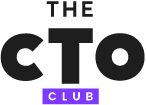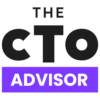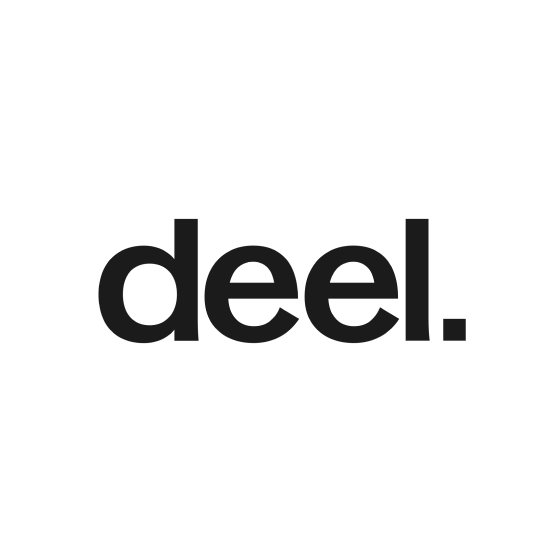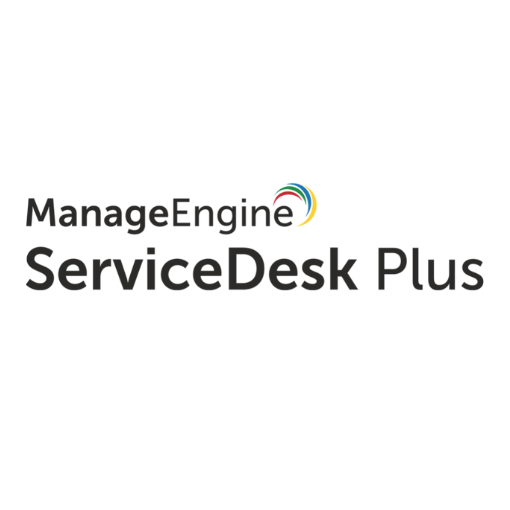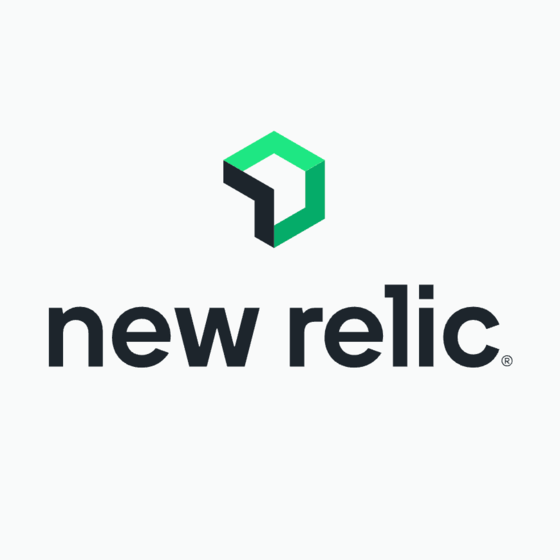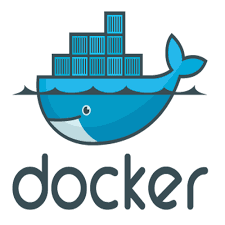Best Configuration Management Tools Shortlist
Here's my pick of the 10 best software from the 28 tools reviewed.
Our one-on-one guidance will help you find the perfect fit.
Managing your team's configurations can feel overwhelming, especially with constant changes and updates. Configuration management tools are here to simplify your process, saving you time and reducing errors. These tools help you keep track of your systems, ensuring everything runs smoothly.
In my experience testing and reviewing software, I've found the best solutions that cater to your needs. I'll guide you through my top picks, offering an unbiased and well-researched perspective.
You'll get insights into each tool's strengths, helping you decide what's best for your team. Let's dive into the world of configuration management and find the tool that fits your requirements perfectly.
Why Trust Our Software Reviews
We’ve been testing and reviewing SaaS development software since 2023. As tech experts ourselves, we know how critical and difficult it is to make the right decision when selecting software. We invest in deep research to help our audience make better software purchasing decisions.
We’ve tested more than 2,000 tools for different SaaS development use cases and written over 1,000 comprehensive software reviews. Learn how we stay transparent & check out our software review methodology.
Best Configuration Management Tools Summary
This comparison chart summarizes pricing details for my top configuration management tools selections to help you find the best one for your budget and business needs.
| Tool | Best For | Trial Info | Price | ||
|---|---|---|---|---|---|
| 1 | Best for global compliance | Free trial + demo available | From $29/month | Website | |
| 2 | Best for customer support integration | Free trial + free demo available | From $25/user/month (billed annually) | Website | |
| 3 | Best for ITIL compliance | 14-day free trial + free demo available | From $19/user/month (billed annually) | Website | |
| 4 | Best for IT help desk support | Free demo available | Pricing upon request | Website | |
| 5 | Best for workflow automation | Free demo available | Pricing upon request | Website | |
| 6 | Best for enterprise scalability | Free demo available | Pricing upon request | Website | |
| 7 | Best for application monitoring | Free plan + demo available | Pricing upon request | Website | |
| 8 | Best for automated backups and restorations | Free demo available | Pricing upon request | Website | |
| 9 | Best for asset management | Free demo available | Pricing upon request | Website | |
| 10 | Best for contact center solutions | Free demo available | Pricing upon request | Website |
-

Docker
Visit WebsiteThis is an aggregated rating for this tool including ratings from Crozdesk users and ratings from other sites.4.6 -

Pulumi
Visit WebsiteThis is an aggregated rating for this tool including ratings from Crozdesk users and ratings from other sites.4.8 -

GitHub Actions
Visit Website
Best Configuration Management Tool Reviews
Below are my detailed summaries of the best configuration management tools that made it onto my shortlist. My reviews offer a detailed look at the key features, pros and cons, integrations, and ideal use cases of each tool to help you find the best one for you.
Deel is a global payroll and HR management tool for companies with distributed teams. It helps businesses hire, onboard, and manage employees and contractors globally while ensuring compliance with local laws.
Why I picked Deel: Deel offers automated payroll and compliance solutions for businesses hiring across borders. Deel supports payments in over 120 currencies, ensuring legal and tax compliance. It's particularly beneficial for startups and tech companies expanding globally.
Standout features & integrations:
Features include automated device procurement, 24/7 support, and security controls to manage IT operations globally. You can easily track devices and ensure compliance without technical knowledge. Deel connects with over 60 HR platforms, streamlining onboarding and offboarding.
Integrations include BambooHR, Greenhouse, Lever, Workday, Xero, QuickBooks, NetSuite, Gusto, Slack, and ADP.
Pros and cons
Pros:
- Global payroll and compliance
- Automated contractor payments
- Built-in legal document templates
Cons:
- High costs for small teams
- Limited customization options
Salesforce Service Cloud is a customer service platform designed for businesses aiming to enhance their customer support operations. It's widely used by customer service teams to manage customer interactions and improve response times.
Why I picked Salesforce Service Cloud: The platform provides a unified view of customer data, enabling your team to deliver personalized service. It features case management and a knowledge base, which helps streamline customer support processes. The integration with other Salesforce products allows for easy data sharing across departments. This makes it ideal for businesses looking to improve their customer service operations through better integration.
Standout features & integrations:
Features include AI-powered chatbots to handle simple inquiries, which can free up your team for more complex cases. The platform also offers customizable dashboards that help you monitor performance metrics. Additionally, it provides tools for automating repetitive tasks, enhancing team productivity.
Integrations include Slack, Microsoft Teams, Google Workspace, Mailchimp, DocuSign, Dropbox, Zoom, HubSpot, Xero, and QuickBooks.
Pros and cons
Pros:
- Strong integration with other Salesforce products
- Customizable dashboards for analytics
- AI-driven customer interaction tools
Cons:
- Steep learning curve for new users
- Complex setup for small teams
Freshservice is an IT service management tool designed for IT teams looking to streamline their operations.
Why I picked Freshservice: It offers a user-friendly interface that simplifies ITIL processes for your team. Features like incident management and change management are designed to align with ITIL standards. The tool also provides a self-service portal, reducing the workload on your IT department. It's particularly effective for businesses needing to adhere to ITIL practices without overwhelming complexity.
Standout features & integrations:
Features include a built-in asset discovery tool that helps you track and manage your IT assets. The platform also offers automation capabilities to handle repetitive tasks, saving your team time. Additionally, Freshservice provides analytics and reporting tools to help you make informed decisions based on data.
Integrations include Microsoft Teams, Slack, Jira, Trello, Zoom, Google Workspace, Dropbox, Zapier, Okta, and Azure Active Directory.
Pros and cons
Pros:
- Easy ITIL process implementation
- Strong automation capabilities
- Built-in asset discovery
Cons:
- Limited customization options
- Steep learning curve for beginners
ManageEngine ServiceDesk Plus is an IT service management tool tailored for IT teams aiming to enhance their help desk operations.
Why I picked ManageEngine ServiceDesk Plus: It offers a comprehensive suite of tools for managing IT help desk activities effectively. The incident management feature helps your team track and resolve issues quickly. Asset management capabilities allow you to maintain a detailed inventory of IT assets. It's change management module supports controlled changes, minimizing disruptions to your operations.
Standout features & integrations:
Features include a self-service portal that empowers users to resolve common issues independently, reducing the workload on your IT team. The tool also offers automation for routine tasks, boosting efficiency. Additionally, it provides detailed reporting and analytics to help you make informed decisions.
Integrations include Microsoft 365, Slack, Jira, Zoho CRM, G Suite, Spiceworks, VMware, Azure Active Directory, Okta, and Dropbox.
Pros and cons
Pros:
- Extensive customization options
- Strong reporting capabilities
- Helps reduce IT workload
Cons:
- Complex setup process
- Can be overwhelming for small teams
Comindware Tracker is a workflow management solution designed for businesses looking to automate and streamline their processes. It's primarily used by teams needing to create and manage workflows without extensive coding knowledge.
Why I picked Comindware Tracker: It provides a flexible workflow designer that lets your team automate processes with ease. The tool allows you to modify workflows on the fly, which is ideal for businesses that require adaptability. It also offers pre-built templates to kickstart your workflow automation efforts. This makes it suitable for teams seeking a customizable yet simple solution for managing complex processes.
Standout features & integrations:
Features include a drag-and-drop interface that simplifies the workflow design process. You can use the built-in reporting tools to track and analyze workflow performance. The platform also supports task management, helping your team stay organized and on track.
Integrations include Microsoft Outlook, Microsoft SharePoint, Dropbox, Google Drive, Box, Salesforce, QuickBooks, Zapier, Slack, and Microsoft Dynamics 365.
Pros and cons
Pros:
- Flexible workflow design
- Supports on-the-fly modifications
- Offers pre-built templates
Cons:
- Requires some training
- Can be resource-intensive
ServiceNow is an IT service management tool designed for large enterprises seeking to improve their IT operations. It supports incident management, change management, and problem management, providing a centralized platform for IT teams to work efficiently.
Why I picked ServiceNow: It offers a scalable platform that can grow with your organization's needs. The incident management feature helps your team resolve issues quickly and efficiently. Its change management module provides control and visibility over changes, reducing risk. ServiceNow's ability to integrate with other enterprise solutions makes it a versatile choice for large businesses.
Standout features & integrations:
Features include a self-service portal that enables users to find solutions to common problems on their own. The tool also offers automation capabilities to streamline routine tasks and increase efficiency. Additionally, ServiceNow provides detailed analytics and reporting tools to help your team make informed decisions.
Integrations include Microsoft Azure, AWS, Google Cloud Platform, Salesforce, Slack, Zoom, Microsoft Teams, Jira, GitHub, and SAP.
Pros and cons
Pros:
- Highly scalable for large enterprises
- Comprehensive change management controls
- Strong analytics and reporting
Cons:
- Limited flexibility for small teams
- High learning curve for new users
New Relic is an application performance monitoring tool aimed at developers and operations teams who need to track and optimize their software's performance.
Why I picked New Relic: It offers real-time monitoring and analytics that help your team understand application performance at a granular level. With its customizable dashboards, you can visualize data in a way that makes sense for your business. The tool's alerting system notifies your team of potential issues before they impact users. This makes it ideal for organizations that prioritize application uptime and performance.
Standout features & integrations:
Features include distributed tracing, which allows you to follow requests as they travel through your system. The tool also offers error analytics to help you pinpoint and fix issues quickly. Additionally, New Relic provides infrastructure monitoring, giving you a complete view of your system's health.
Integrations include AWS, Microsoft Azure, Google Cloud Platform, Kubernetes, Slack, PagerDuty, Jenkins, GitHub, Atlassian Jira, and Datadog.
Pros and cons
Pros:
- Granular performance insights
- Customizable dashboards
- Real-time alerting system
Cons:
- Can be complex to set up
- Requires technical expertise
Best for automated backups and restorations
ManageEngine Network Configuration Manager (NCM) helps you monitor, manage, and back up your network device configurations. It supports multi-vendor environments and gives you visibility into configuration changes, compliance gaps, and device vulnerabilities.
Why I picked ManageEngine Network Configuration Manager: I picked ManageEngine NCM for its robust backup automation and configuration versioning. It helps you stay in control by making it easier to track changes across network devices and revert when something breaks. Backups can be scheduled or triggered by config changes, and they're stored with version history so you can compare and roll back as needed. That kind of visibility is especially useful in large or regulated environments. NCM also supports compliance audits and security policies, so you can catch issues before they affect your infrastructure.
Standout features & integrations:
Features include a real-time change alerting system, configlets to push bulk changes, and firmware vulnerability scanning. There's a mobile app so you can check config status or backup history on the go. You’ll also get role-based access controls and activity tracking to reduce unauthorized changes.
Integrations include ServiceDesk Plus, Log360, ADManager Plus, ADAudit Plus, Identity360, and other ManageEngine tools in the ecosystem.
Pros and cons
Pros:
- Helpful compliance auditing for frameworks like CIS and PCI-DSS
- Real-time alerts flag unauthorized or risky changes
- Automated backups reduce risk of losing critical config data
Cons:
- Integration setup with non-ManageEngine tools may require support
- Limited UI customization
ManageEngine Service Desk Plus is an IT service management tool designed for IT teams focused on managing and tracking IT assets effectively.
Why I picked ManageEngine Service Desk Plus: It offers a comprehensive asset management module that helps your team maintain an accurate inventory of IT assets. The tool provides detailed asset lifecycle management, which is crucial for organizations with extensive IT infrastructure. It also includes incident and problem management features to streamline IT support processes. This makes it a great choice for businesses looking to enhance their asset management capabilities.
Standout features & integrations:
Features include a self-service portal that empowers users to resolve common issues independently, reducing the workload on your IT team. The tool also offers automation for routine tasks, boosting efficiency. Additionally, it provides detailed reporting and analytics to help you make informed decisions.
Integrations include Microsoft 365, Slack, Jira, Zoho CRM, G Suite, Spiceworks, VMware, Azure Active Directory, Okta, and Dropbox.
Pros and cons
Pros:
- Effective change management module
- Strong reporting capabilities
- Helps reduce IT workload
Cons:
- Requires considerable training
- Limited mobile app functionality
Pointel CMS is a configuration management solution tailored for contact centers using the Genesys platform. It helps manage configuration changes, track real-time updates, and ensure optimal performance in customer support environments.
Why I picked Pointel CMS: It provides real-time change tracking, which is crucial for maintaining the integrity of your contact center operations. The tool offers detailed audit reports, allowing your team to identify and rectify misconfigurations quickly. It also includes alerting capabilities for critical changes, ensuring your team is aware of important updates. These features make it ideal for contact centers aiming to maintain high performance and customer satisfaction.
Standout features & integrations:
Features include the ability to restore configurations to previous states, helping your team recover from errors swiftly. The CMS supports easy backup and comparison of configurations, enhancing your operational efficiency. Additionally, it manages agent logins and streamlines the promotion of applications across environments.
Integrations include Genesys Cloud, Microsoft Teams, Salesforce, Slack, AWS, Microsoft Azure, Google Cloud Platform, Zoom, Jira, and HubSpot.
Pros and cons
Pros:
- Real-time change tracking
- Detailed audit reports
- Easy configuration restoration
Cons:
- May require technical expertise
- Limited to contact center environments
Other Configuration Management Tools
Here are some additional configuration management tools options that didn’t make it onto my shortlist, but are still worth checking out:
- Octopus
For deployment automation
- Rudder
For hybrid IT environments
- TeamCity
For continuous integration
- SolarWinds Service Desk
For IT asset management
- Jira Service Management
For agile teams
- SysAid
For IT service management
- Checkmk
For real-time monitoring
- Alloy Navigator
For IT service and asset management
- Device42
For IT asset tracking
- Virima
For service mapping
- Canfigure
For customizable IT management
- Juju
For cloud-native applications
- CFengine
For scalable configuration
- ManageEngine
For unified IT tools
- IBM Engineering Lifecycle Management
For engineering teams
- Micro Focus Configuration Management System
For enterprise-grade scalability
- Ansible
For automation scripting
- SaltStack
For event-driven automation
Configuration Management Tool Selection Criteria
When selecting the best configuration management tools to include in this list, I considered common buyer needs and pain points like managing complex system configurations and ensuring compliance with industry standards. I also used the following framework to keep my evaluation structured and fair:
Core Functionality (25% of total score)
To be considered for inclusion in this list, each solution had to fulfill these common use cases:
- Automate configuration changes
- Track configuration history
- Enforce compliance standards
- Manage configuration policies
- Monitor system performance
Additional Standout Features (25% of total score)
To help further narrow down the competition, I also looked for unique features, such as:
- Real-time configuration monitoring tools
- Advanced reporting and analytics
- Integration with cloud services
- Customizable dashboards
- Role-based access controls
Usability (10% of total score)
To get a sense of the usability of each system, I considered the following:
- Intuitive user interface
- Easy navigation
- Learning curve for new users
- Availability of user guides
- Customization options
Onboarding (10% of total score)
To evaluate the onboarding experience for each platform, I considered the following:
- Availability of training videos
- Interactive product tours
- Comprehensive documentation
- Access to webinars and tutorials
- Support during initial setup
Customer Support (10% of total score)
To assess each software provider’s customer support services, I considered the following:
- 24/7 support availability
- Access to live chat
- Responsiveness of support team
- Availability of a knowledge base
- Provision of dedicated account managers
Value For Money (10% of total score)
To evaluate the value for money of each platform, I considered the following:
- Competitive pricing
- Features offered for the price
- Availability of free trials
- Scalability of pricing plans
- Customer feedback on pricing
Customer Reviews (10% of total score)
To get a sense of overall customer satisfaction, I considered the following when reading customer reviews:
- Overall satisfaction ratings
- Commonly mentioned pros and cons
- Frequency of updates and improvements
- User feedback on reliability
- Customer loyalty and retention rates
How to Choose Configuration Management Tool
It’s easy to get bogged down in long feature lists and complex pricing structures. To help you stay focused as you work through your unique software selection process, here’s a checklist of factors to keep in mind:
| Factor | What to Consider |
| Scalability | Ensure the tool can grow with your organization. Look for solutions that support increasing data loads and expanding user bases without performance dips. |
| Integrations | Check if the tool integrates with your current systems like cloud services, databases, and other IT management software for seamless operations. |
| Customizability | Look for tools that allow you to tailor workflows and dashboards to fit your team's specific needs, enhancing operational efficiency. |
| Ease of Use | Choose a tool with a user-friendly interface to minimize training time and help your team hit the ground running quickly. |
| Budget | Consider the total cost of ownership, including subscription fees, potential add-ons, and any hidden costs that might impact your budget. |
| Security Safeguards | Make sure the tool offers robust security features like encryption, access controls, and compliance with industry regulations to protect your data. |
| Support Services | Evaluate the availability and quality of customer support, including live chat, dedicated account managers, and access to a comprehensive knowledge base. |
| Performance Tracking | Look for features that provide real-time monitoring and analytics to help you track and optimize system performance effectively. |
Trends in Configuration Management Tool
In my research, I sourced countless product updates, press releases, and release logs from different configuration management tools vendors. Here are some of the emerging trends I’m keeping an eye on:
- AI-Driven Insights: More tools are integrating AI to offer predictive analytics and smarter decision-making. This helps teams anticipate issues before they arise, improving system reliability. Vendors like ServiceNow are already exploring AI-enhanced monitoring.
- Shift to Cloud-Native: There's a growing focus on cloud-native solutions that offer flexibility and scalability. This trend is driven by the need for businesses to manage configurations across cloud environments efficiently. Tools like Juju are designed with cloud-native features in mind.
- Enhanced Security Features: With increasing cyber threats, tools are adding more security layers. Features like real-time threat detection and compliance auditing are becoming standard. Ansible is known for its focus on security in configuration management.
- User-Centric Interfaces: Vendors are prioritizing user experience by creating more intuitive interfaces. This trend aims to reduce the learning curve, making it easier for teams to adopt new tools quickly. ManageEngine is noted for its user-friendly design.
- Focus on Sustainability: Companies are now considering the environmental impact of their IT operations. Configuration management tools are incorporating features that help monitor and reduce energy consumption. This trend aligns with broader corporate sustainability goals.
What Are Configuration Management Tools?
Configuration management tools are software solutions designed to automate and manage changes in IT systems and software configurations. IT professionals, system administrators, and DevOps teams typically use these tools to ensure systems are consistent, secure, and compliant. Version control, automated updates, and compliance checks help with maintaining system integrity and reducing manual errors. Overall, these tools provide significant efficiency and reliability in managing complex IT environments.
Features of Configuration Management Tools
When selecting configuration management tools, keep an eye out for the following key features:
- Version control: Tracks changes in configurations, allowing you to revert to previous states if needed, which ensures system stability.
- Automated updates: Automatically applies updates to systems, reducing manual effort and minimizing downtime.
- Compliance checks: Ensures your configurations meet industry standards and regulations, helping maintain security and compliance.
- Real-time monitoring: Provides continuous oversight of system configurations, enabling quick response to potential issues.
- Customizable workflows: Allows you to tailor processes to fit your specific business needs, enhancing operational efficiency.
- Role-based access controls: Restricts access to sensitive configurations based on user roles, improving security.
- Predictive analytics: Uses data insights to anticipate configuration issues before they occur, aiding in proactive management.
- Self-service portal: Empowers users to resolve common issues independently, reducing the workload on IT teams.
- Audit trails: Keeps a detailed record of all configuration changes, aiding in troubleshooting and accountability.
- Environment-specific configurations: Offers tailored settings for different environments, ensuring optimal performance across platforms.
Benefits of Configuration Management Tools
Implementing configuration management tools provides several benefits for your team and your business. Here are a few you can look forward to:
- Increased efficiency: Automated updates and integrations with requirements management software reduces manual tasks, allowing your team to focus on more strategic initiatives.
- Enhanced security: Compliance checks and role-based access controls help protect your systems from unauthorized changes and vulnerabilities.
- Improved reliability: Real-time monitoring and version control ensure consistent system performance and quick recovery from issues.
- Better decision-making: Predictive analytics provide insights to anticipate and address potential problems before they escalate.
- Cost savings: By minimizing downtime and reducing manual labor, these tools can lead to significant cost reductions over time.
- Greater flexibility: Customizable workflows and environment-specific configurations allow you to adapt processes to suit your business needs.
- Streamlined troubleshooting: Audit trails offer a clear record of changes, making it easier to identify and resolve issues efficiently.
Costs and Pricing of Configuration Management Tools
Selecting configuration management tools requires an understanding of the various pricing models and plans available. Costs vary based on features, team size, add-ons, and more. The table below summarizes common plans, their average prices, and typical features included in configuration management tools solutions:
Plan Comparison Table for Configuration Management Tools
| Plan Type | Average Price | Common Features |
| Free Plan | $0 | Basic monitoring, limited support, and simple configuration. |
| Personal Plan | $5-$25/ user/month | Version control, automated updates, and basic analytics. |
| Business Plan | $30-$60/ user/month | Real-time monitoring, compliance checks, and customizable workflows. |
| Enterprise Plan | $70-$150/ user/month | Advanced security features, predictive analytics, and dedicated account support. |
Configuration Management Tools FAQs
Here are some answers to common questions about configuration management tools:
How do configuration management tools help with compliance?
Configuration management tools help ensure compliance by automatically checking configurations against industry standards and regulations. They provide audit trails and reports that document configuration changes, making it easier for your team to prove compliance during audits. This reduces the risk of non-compliance penalties.
Can configuration management tools integrate with cloud services?
Yes, many configuration management tools offer integrations with popular cloud services like AWS, Azure, and Google Cloud Platform. These integrations allow your team to manage configurations across cloud environments, ensuring consistency and control over your infrastructure. It simplifies the process of scaling resources in the cloud.
What are the benefits of using automation in configuration management tools?
Automation in configuration management tools reduces manual errors and saves time by handling repetitive tasks. It ensures that configurations are consistently applied across all systems, maintaining stability and reliability. Your team can focus on more strategic tasks, knowing that the system is automatically managed.
How do configuration management tools support disaster recovery?
Configuration management tools support disaster recovery by ensuring that all configurations are backed up and can be restored quickly. They enable version control, allowing your team to revert to previous configurations if needed. This helps minimize downtime and data loss during unexpected events.
Are configuration management tools suitable for small businesses?
Yes, configuration management tools can be tailored to fit the needs of small businesses. Many tools offer scalable pricing plans and features that can grow with your business. They help small teams maintain control over their IT environments without needing extensive resources.
What should I consider when choosing a configuration management tool?
When choosing a configuration management tool, consider factors like scalability, ease of use, integrations, and security features. Evaluate your team’s specific needs and budget to find a tool that aligns with your business goals. Testing a few options with free trials can also help make an informed decision.
What's Next?
Boost your SaaS growth and leadership skills. Subscribe to our newsletter for the latest insights from CTOs and aspiring tech leaders. We'll help you scale smarter and lead stronger with guides, resources, and strategies from top experts!
